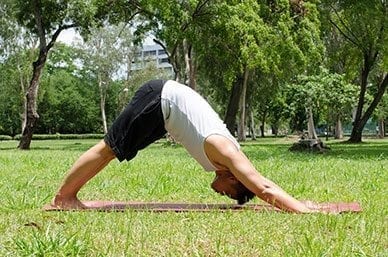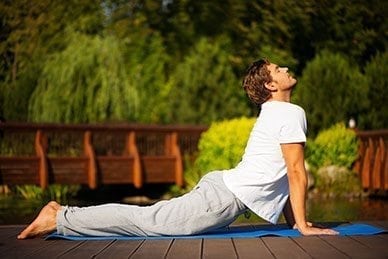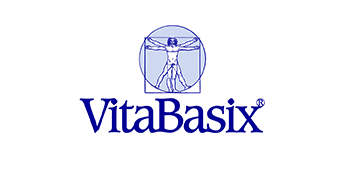Proper balance of all the body’s hormones is necessary for optimum health. For men, healthy testosterone levels are especially important. Not having enough testosterone can cause serious problems in a man’s life.
Low Testosterone Levels can be dangerous
The multitude of possible effects of low testosterone can be devastating, and include:
- depression
- difficulty concentrating
- erectile dysfunction
- fatigue
- gynecomastia
- increased bone mass
- infertility
- loss of bone mass
- loss of muscle mass
- low semen volume
- low libido
- sexual dissatisfaction
Possible Causes
Low testosterone can be caused by a wide variety of factors, both physical and psychological. Although low testosterone can be a natural effect of aging, if your testosterone levels are too low, there are a very wide variety of other potential causes including taking certain medications, kidney or liver problems, obesity, lack of sleep, stress, infection, testicular injury and environmental toxins like the BPA found in plastic. Low testosterone can also be the result of certain congenital conditions, problems with the hypothalamus or pituitary gland and diseases like type 2 diabetes.
It may not be just one cause behind a man’s low testosterone. Any of the items on the above list may be a contributing factor but not the sole cause. It’s important to approach the problem from all angles.
In the absence of serious medical problems, low testosterone can often be treated through natural methods and lifestyle changes. Maintaining a healthy weight, exercising regularly, getting enough sleep and keeping stress to a minimum is often enough to regulate hormone levels for many men. This lets you avoid the side effects of prescription testosterone therapy, such as an increased risk of blood clots and stroke.
Alternative therapies like aromatherapy, herbal medicine and acupuncture can also be very useful for treating mild-to-moderate testosterone deficiency. Yoga, in particular, is a powerful adjunct therapy for a testosterone-boosting health plan.
Yoga: Ancient Medicine
The word “yoga” technically refers to a broad group of spiritual practices. Experts estimate that these schools of religious thought originated around 500 B.C. The type of physical exercise that Westerners commonly refer to as “yoga” originates from a specific branch of yogic religious practice called Hatha yoga.
 Hatha yoga became popular in the Western world in the 20th century, especially after the mid-1970s. People all over the world have realized the physical, mental and spiritual benefits of this intricate system of exercise. However, the original Hatha yoga practice included not only yoga poses but also dietary practices, breathing practices and balancing the flow of energy in one’s spiritual body.
Hatha yoga became popular in the Western world in the 20th century, especially after the mid-1970s. People all over the world have realized the physical, mental and spiritual benefits of this intricate system of exercise. However, the original Hatha yoga practice included not only yoga poses but also dietary practices, breathing practices and balancing the flow of energy in one’s spiritual body.
Though yoga as exercise originated in Indian religious practices, in the modern era many people implement it in a secular fashion, taking advantage of its health benefits. Many of these benefits are well-documented by modern medical science. For example, evidence shows that yoga can be helpful for anxiety, blood pressure, chronic pain, depression and insomnia. Yoga continues to be extensively researched for a wide variety of health applications.
It is also extremely beneficial to use yoga to boost testosterone. It works partially due to yoga’s powerful anti-stress effects. Chronic stress is a known culprit of low testosterone levels. A regular yoga practice can also benefit your circulation, nervous system and lymphatic system, and even your sex life, holistically improving your whole-body health and therefore your hormone levels.
Yoga to Boost Testosterone
Under the ancient system of yoga, different poses benefit different parts of the body and different aspects of health. Here are seven yoga poses indicated for improving low testosterone and relieving the side effects of it, along with links to instructions for each pose.
1. Bound Angle Pose
The Bound Angle pose is a basic-level pose that relaxes the tissues of the hips and stimulates the reproductive and nervous systems, making it great for increasing testosterone.
2. Bridge Pose
According to yogic tradition, the beginner-difficulty Bridge pose stimulates the endocrine and nervous systems. Since the endocrine system is basically your body’s hormone factory, this pose can help increase your testosterone.
3. Cat-Cow Flow
To do the Cat-Cow Flow, slowly change from the Cat pose to the Cow pose five times. This is a beginner-level flow that benefits your adrenal glands. The adrenal glands are part of the endocrine system, and so the Cat-Cow Flow can help improve hormone balance.
4. Chair Pose
The Chair pose stimulates and strengthens the lower body. Stimulating the lower tissues of the lower body can help improve sexual function. This is a basic-level pose.
5. Cobra Pose
 The Cobra is a beginner-level yet powerful pose that invigorates the kidneys and the nervous system. Healthier kidneys can help your body detox more effectively, improving hormone balance.
The Cobra is a beginner-level yet powerful pose that invigorates the kidneys and the nervous system. Healthier kidneys can help your body detox more effectively, improving hormone balance.
The Cobra pose may be the most important yoga pose for improving testosterone. In one study, Russian scientists measured blood hormone levels of volunteers before and after the volunteers held the Cobra pose for just 2-3 minutes. The researchers found that levels of cortisol, the stress hormone, dropped by 11 percent after this short time. Meanwhile, testosterone levels increased by 16 percent.
6. Downward Dog
Downward Dog is a basic pose that even people who have never tried yoga have heard of at some point. Downward Dog is great for the nervous system. An invigorated nervous system can help improve sexual responsiveness that may have been damaged by low testosterone.
7. Pigeon Pose
The Pigeon pose is an intermediate-level yoga position. It is beneficial to the tissues of the hips and pelvis area, therefore improving the health of your reproductive system.


